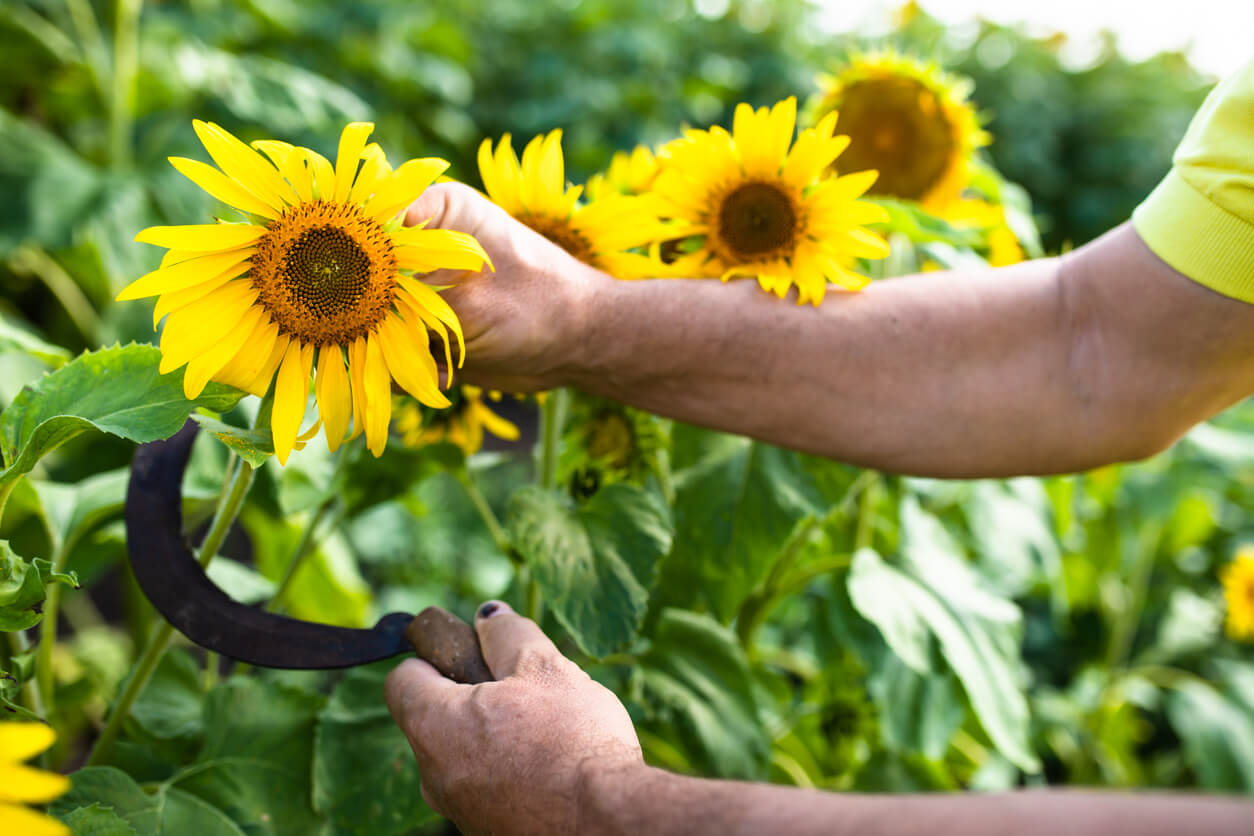
Gardener harvesting sunflowers
You can actually harvest your sunflowers at different stages, depending on what you want to do with them. Want cut flowers from your branching varieties? Clip them as soon as they’ve fully bloomed, or even a day or two before. Some sunflowers are bred for culinary uses beyond harvesting the seeds; if you grow those, you can harvest the flower ray petals and the disc flowers for fresh garnishes, or dry them to make a sunflower tea. Check your seed packets for the specific uses of each variety.
You can prepare some immature flowers in the same way you’d prepare an artichoke. Remove the flower ray petals and disc flowers. Boil the sunflower head for about 10 minutes. Drain the water, refill the pot with fresh water to cover the sunflower head, and boil for another five to 10 minutes or until it’s tender. You can also rub the immature seed head with oil and grill it or bake it face-down for about 15 minutes. Then you can eat pretty much the entire flower!
If you’ve been growing big, plate-size sunflowers to harvest the seeds, you’ll know the flower’s ready when a few things happen:
- The flower head droops, facing the ground
- Flower ray petals fall off
- The back of the flower turns from a bright green to a yellow or dull green and then starts to turn brown
Cut the sunflower off the stalk a foot or so down from the flower. Pull off any remaining flower ray petals. Then take a look at the surface of the sunflower: all those tiny disc flowers should be ready to just brush off. Use your hand or a soft brush to remove all the disc flowers. Decide whether you want to keep the disk flowers to dry for tea, or if you’re just going to compost them.
Use the whole plant
By the way, the whole sunflower plant is useful in some way. Sunflowers create a lot of biomass that can go to good use:
- Leaves: if they’re younger leaves, you can sauté them like spinach or bake them like kale chips. If the leaves are at the end of the plant’s life cycle, you can chop them up and use them as compost (as long as they’re healthy).
- Stalks: Sunflower stalks make great garden stakes! Cut them off at ground level and leave them out for about a week to dry. They’ll be lightweight and very strong. For smaller varieties, you can dry out the stalks and use the pieces as kindling. If you’re feeling really ambitious, you can cut the stalks open, scoop out the pith, dry it, and grind it into flour.
How do you decide when your sunflowers are ready to harvest? Do you harvest any early for cooking? Do you use parts of the sunflower besides the flower? Please share your tips with us in the comment section below.


 Previous
Previous

